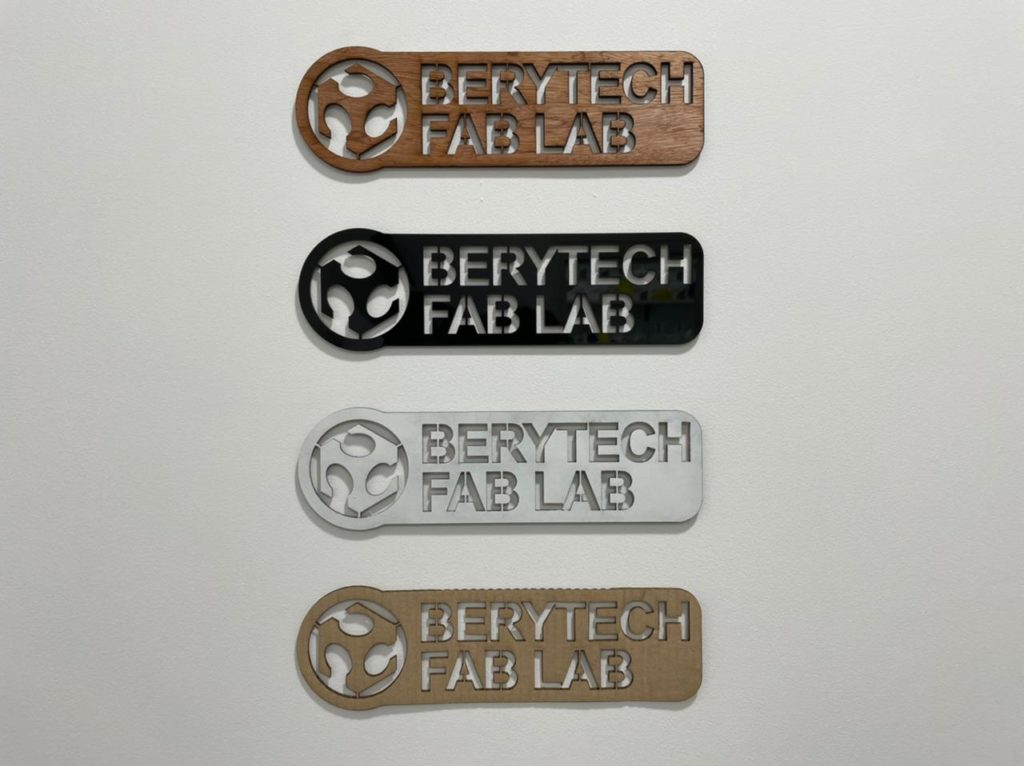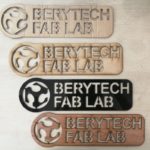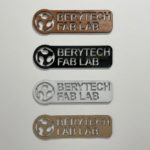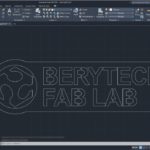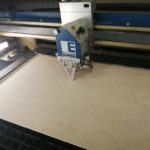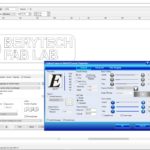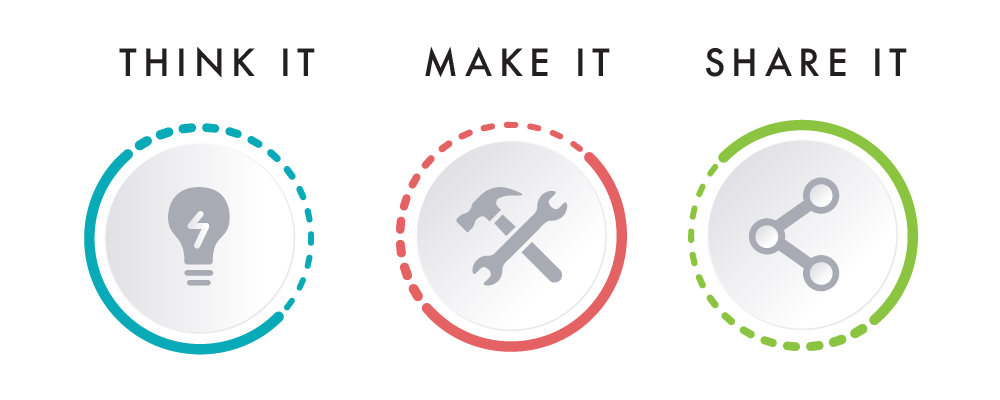This section describes the different steps followed to Laser Cut the Berytech Fab Lab Logo from various material types at the Fab Lab.
Step – 1 : Prepare the Logo for Engraving

The logo is first designed on any 2d graphics software of your choice. In this case we used Adobe Illustrator to design the fab lab’s logo.
Step – 2: Save Design In .DXF Format
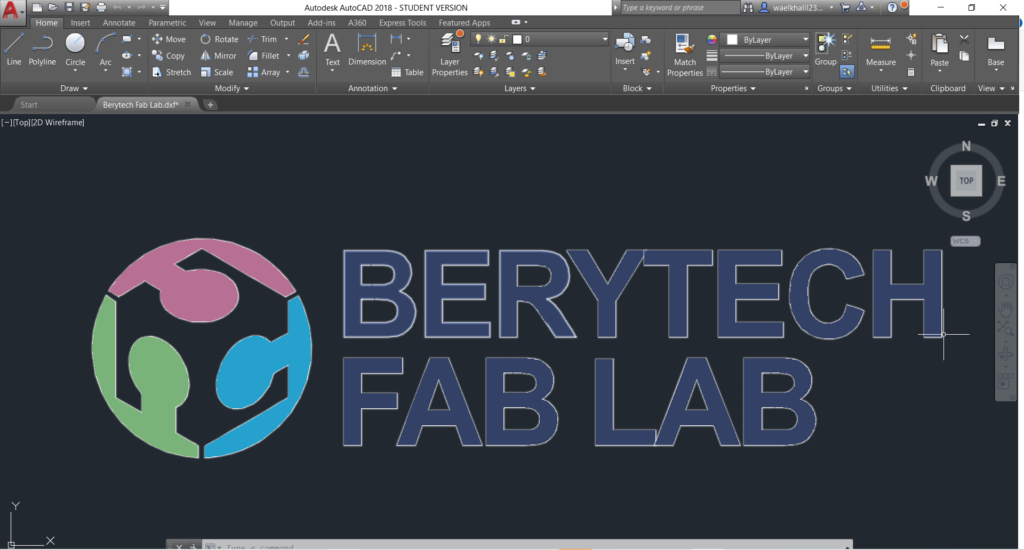
To extract the Vector File from the Logo design, open the file in Adobe Illustrator, and then export it to .DXF format.
This design was then opened in AutoCad, and it was edited in a way the the inner parts of the letters will stay connected to the main body after cutting. An external outline was also added to cut the part from the main material after cutting the logo.

Once the design is ready and the final shape of the object is reached, the next step is to save the object in .dxf format, so that we can open it on any preparation software before we push the job to the Laser Cutter.
Step – 3: Prepare Your File For Laser Cutting
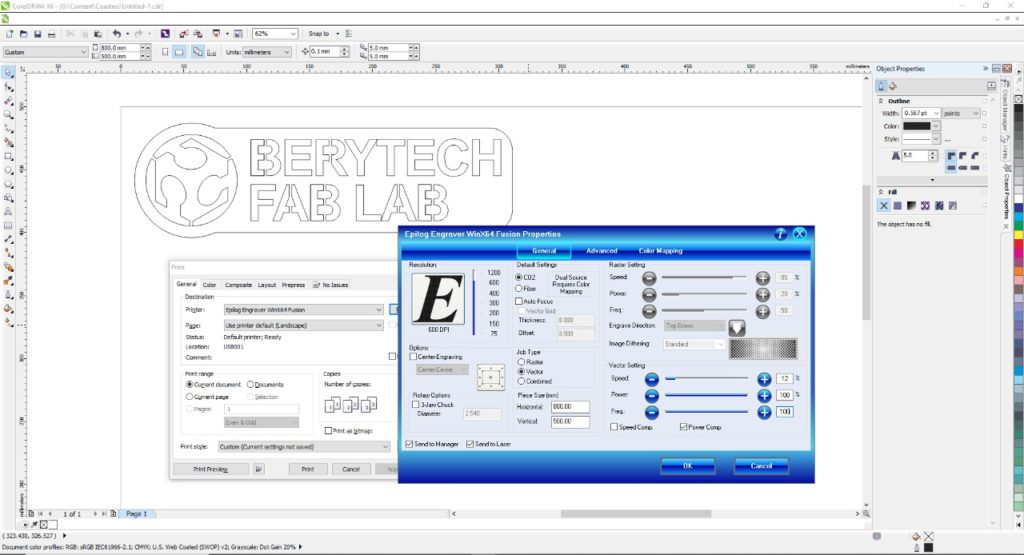
To prepare the Laser Cutting job, you should open the digital design file in a preparation software and choose the best settings that would achieve the best final result. In this example, we used Corel Draw as a preparation software.
- Import the digital design file into CorelDraw by selecting “File” > “Import” > Choose you file from location.
- Choose Your Material: Typically you may have an idea about what kind of material you will use before you laser cut. This is very important to choose the best settings required for the chosen material. Preferred settings for different material can be found in the Machine’s Catalogue. Best settings are usually chosen based on experience and previous tests done. In this example we will be using Plywood, MDF, Acrylic and Cardboard. Each material requires a specific setting to cut through it, so various settings were used for different material.
- Choose Job Type: “Vector” was selected, as we are only cutting in this example.
- Choose Your Cutting Parameters: The next step is then deciding on the different parameters for cutting, the “Vector Settings”. We have to choose the best settings we need to have the best result. There are different variables that affect the final product coming out of the Laser Cutter. Among those variables are the Power and Speed. In this example the following settings were used for the various material:
- Plywood and MDF: Speed: 12%, Power: 100%, Frequency: 10
- Acrylic: Speed: 12%, Power: 100%, Frequency: 100
- Cardboard: Speed: 90%, Power: 70%, Frequency: 10
- Forward the Job: After choosing all the variables, send the order to the laser cutter. But before pressing Play on the Laser cutter, we have to manually set it up the printer with respect to the material we intend to use.
Step – 4: Setting Up The Laser Cutter
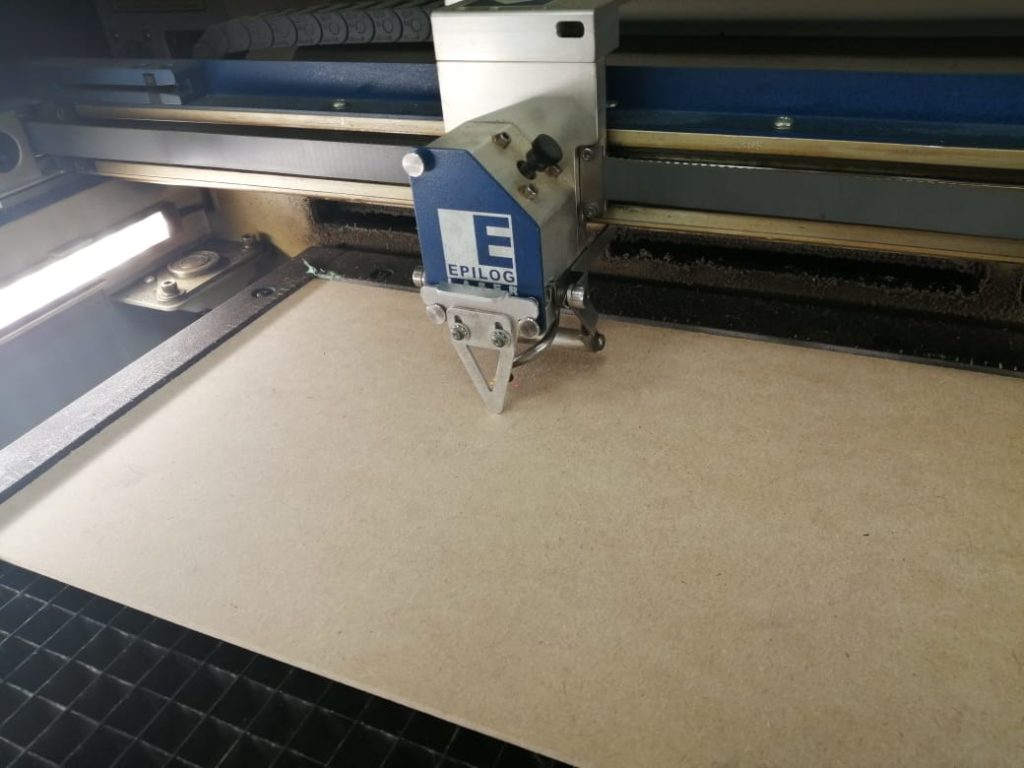
After preparing the file and the relative settings we need, the next step is to place the material we want in the laser cutter and set it up according to the thickness of the material.
To cut and engrave on our laser cutter, the following procedure was followed:
- Set the focus of the laser using the V shaped Gauge.
- Set the zero position of the laser on the top left corner of the MDF sheet.
- Turn On the Air compressor and ventilators .
Step-5: Perform The Cut
This is when the magic happens!
Press the play button on the laser cutter, and voila, it starts cutting.
Step-6: Remove Your Parts

Remove the laser parts from the cutting bed after it cools down and all the fumes are sucked out of the machine.
Depending on what you want your final product to be or the material you used, there may be additional post-processing steps after cutting, like removing protective film, painting, brushing off powder, cleaning burnt sides, etc.
In this example, the part that was cut on the MDF board was spray painted in White as shown in the main image above. For the part that was cut using Acrylic material, the protective film was removed showing a glossy black finishing.




